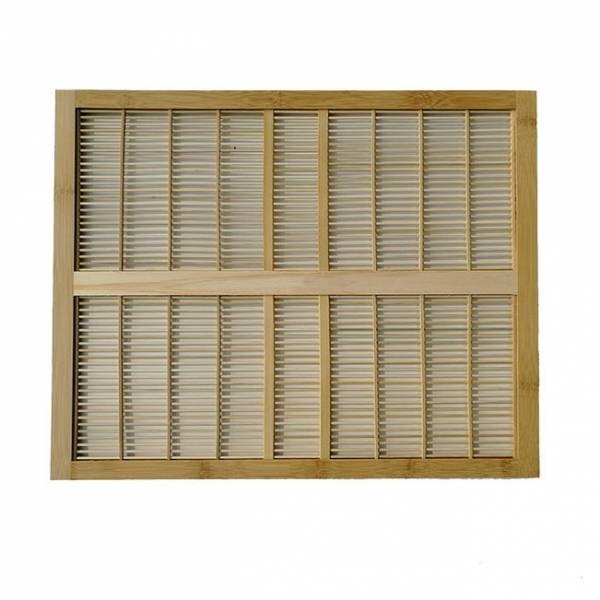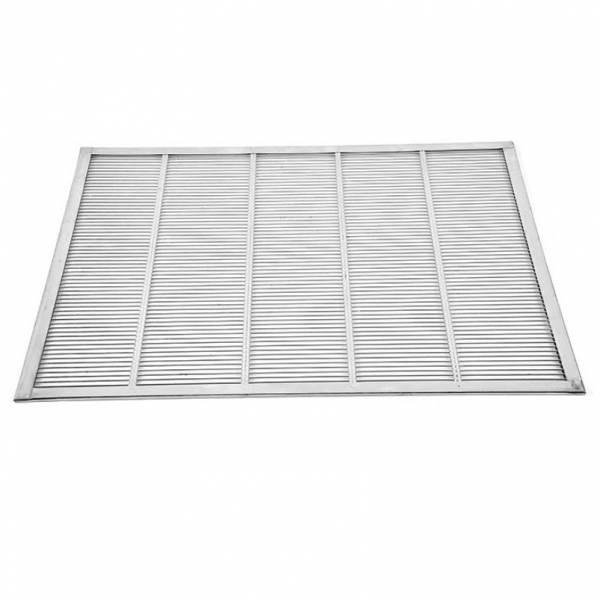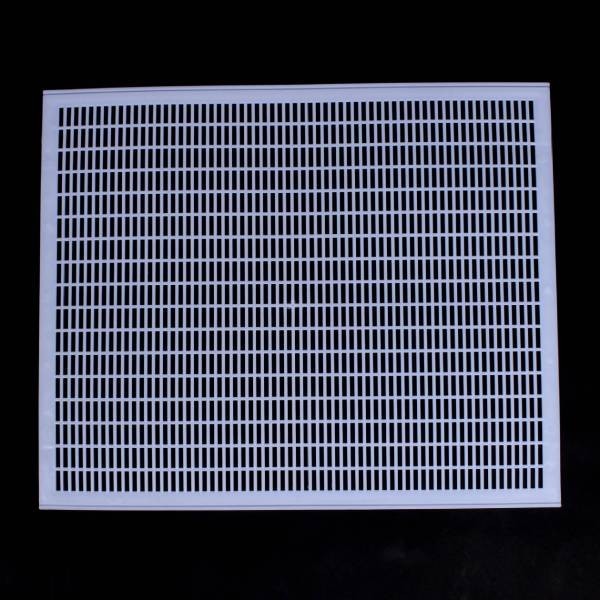A queen excluder is a selective barrier inside a beehive that limits the queen’s access to parts of the hive. The most common type of queen excluder is a wire mesh screen with hexagonal-shaped openings. This type of excluder allows worker bees to pass through, but queen bees and drones are too large to fit through the openings.
The queen excluder takes advantage of this difference in size to prevent the queen from laying eggs in areas designated for honey storageA queen excluder is a device used in beekeeping to prevent the queen bee from accessing certain parts of the hive. The queen excluder consists of a frame with a grid of bars that are spaced too close together for the queen to pass through, but not too close together to prevent the smaller worker bees from passing through. The queen excluder is placed between the brood chamber and the honey super (where the honey is stored), so that the queen cannot lay eggs in the honey super. This is important because if the queen lays eggs in the honey super, the larvae will consume the honey, leaving none for the bees to harvest.
The most common type is a screen with 14 inch hexagonal openings. It is placed between the brood chamber and the honey supers so the queen cannot get through the openings to lay eggs, but the worker bees can pass through to deposit nectar and pollen. There are also variations of this screen that allow the queen to pass but not the drones.
Queen excluders are used to prevent the queen bee from getting into areas where she isn't wanted. For example, if you only want the queen to lay eggs in one area of the hive, you would use an excluder to keep her out of the other areas. Excluders are also used when you want to harvest honey from a particular area of the hive. By keeping the queen out, you can be sure that the honey you harvest is pure and uncontaminated.
The purpose of a queen excluder is to prevent the queen from laying eggs in the honey supers, which would result in the honey being contaminated with larvae.The use of a queen excluder has been a controversial topic amongst beekeepers for many years. Some beekeepers believe that queen excluders are essential in order to prevent the queen from laying eggs in the honey supers, which would contaminate the honey. Other beekeepers declare them unnatural and not required, arguing that the queen will lays eggs where she chooses and that the excluders can actually cause more harm than good. There is no right or wrong answer, and each beekeeper must decide what is best for their own hive.
Pros of queen excluders
Most commercial beekeepers use queen excluders to keep track of their queens. By doing so, they can easily remove boxes of honey without having to individually inspect each frame. This saves the beekeeper time and effort.
Inspecting hundreds of hives per day can be extremely time consuming. Any time that can be saved is beneficial.
If you are keeping your queen in a limited space, it will be easier to find her if you need to re-queen the colony or check the brood for disease. This is because she will be in one specific area, rather than spread out throughout the hive.
Bees will typically store pollen close to the brood so honey extracted from frames that are brood free will contain less pollen and other materials. A queen excluder is a device used by beekeepers to prevent the queen bee from accessing all parts of the hive, including the honey-storage area. This allows beekeepers to harvest honey without having to worry about the queen bee getting in the way.
Cons of queen excluders
When left to do things naturally in a tree cavity, the queen is free to lay eggs anywhere she pleases. However, in a man-made hive with frames and an excluder, the queen is confined to laying her eggs in the frames. This often results in the formation of queenless drone colonies that don’t produce any honey.
Some beekeepers find that when they place an excluder between the brood boxes and the supers, the bees will not cross it to get to the supers. The beekeepers will then fill the brood boxes with pollen and honey to keep the bees fed until they can remove the excluder.
If there is no place for the queen to lay her eggs, it increases the chances of the bees swarming. The queen needs a place to lay her eggs where they will be protected and she will have enough food. If the hive gets too full, the bees will swarm and leave the hive in search of a new home.
Queen excluders are used to keep the queen bee from getting into certain areas, like the honey supers. They can require regular maintenance as the bees can fill some of the gaps with wax or propolis. This can prevent the queen from getting into the supers and laying eggs, which can ruin the honey.
One type of excluder that could damage the wings of worker bees and result in a shorter lifespan are those with sharp edges. While the excluder itself may not be the cause of death, if the bee's wings are damaged it could make it more difficult for the bee to forage and collect food. In turn, this could lead to a shortened lifespan.
Drones bees are larger than queen bees and can get stuck in the excluders. If a drone is trapped above the excluder, he will get stuck and die trying to get through. Drones are not able to sting, so they are not a threat to humans. Some beekeepers choose to remove the drones from their hive to prevent them from taking up valuable resources. A queen excluder is a device used in beekeeping to keep the queen bee from accessing certain parts of the beehive. They are often used in conjunction with a queen bee cage, to ensure that the queen stays where the beekeeper wants her. To remove a queen excluder, simply lift it out of the beehive.
The queen excluder keeps the brood out of the honey boxes, which is important for commercial apiaries. There are some potential downsides to using queen excluders, but they are generally outweighed by the benefits.
Some beekeepers feel that using an excluder is the best way to ensure that their honey is pure and uncontaminated by beeswax. Other beekeepers believe that using an excluder is more work than it is worth. Ultimately, using an excluder comes down to each beekeepers personal preference.
Wooden Queen Excluder
The wooden queen excluder is the most popular queen excluder for beekeeping.

Metal Queen Excluder Wholesale
The queen excluder is used to prevent the queen laying eggs in the honey stores.

Plastic Queen Excluder Wholesale
Plastic Queen Excluder is lighter than wooden queen exluder and metal queen excluder. It's easier for beekeepers to move the bee hives.

